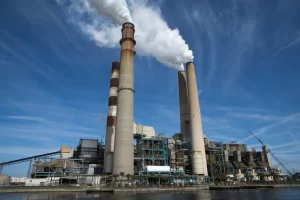The U.S. economy grew at an annual rate of 3% in the second quarter of 2024, according to revised data from the Commerce Department, exceeding earlier estimates and signaling a robust economic rebound. The upward revision reflects stronger consumer spending, business investment, and a resilient labor market, which have helped bolster growth despite ongoing challenges such as inflation and higher interest rates. Here’s a closer look at the factors driving this faster-than-expected growth and what it means for the broader economic outlook.
Key Drivers of Economic Growth
- Robust Consumer Spending: Consumer spending, which accounts for more than two-thirds of U.S. economic activity, played a significant role in the stronger growth figures. Americans continued to spend on services such as travel, dining, and healthcare, reflecting sustained demand despite high prices. The strength of the labor market, with low unemployment and steady wage gains, has provided households with the financial confidence to maintain spending levels.
- Increased Business Investment: Business investment in equipment, technology, and infrastructure also contributed to the economic expansion. Companies are investing to improve efficiency and capacity in response to strong demand, particularly in sectors like manufacturing and technology. This surge in capital spending underscores business confidence in the economic outlook, even as borrowing costs remain elevated.
- Government Spending Boost: Government spending at the federal, state, and local levels also saw an uptick, particularly in infrastructure projects and defense, contributing to the overall economic growth. The government’s ongoing investment in infrastructure under various initiatives has provided a steady stream of economic activity, supporting construction jobs and related industries.
- Resilient Labor Market: The labor market has remained resilient, with unemployment staying low and job creation continuing at a healthy pace. This strong employment environment has kept consumer confidence high, despite challenges such as rising borrowing costs and inflationary pressures.



Implications of the Stronger Growth
The faster-than-expected growth in the second quarter suggests that the U.S. economy is more resilient than previously thought, even in the face of restrictive monetary policies aimed at curbing inflation. This robust economic performance could provide the Federal Reserve with more flexibility in its future rate decisions, as policymakers balance the dual objectives of sustaining growth and controlling inflation.
However, the growth also raises questions about the sustainability of current economic trends. With inflation still above target, there is a risk that continued strong economic activity could lead to further price pressures, prompting the Fed to maintain or even increase interest rates.








Challenges Ahead
While the revised growth figures are encouraging, several challenges remain. Inflation, though moderating, continues to affect household purchasing power, and the high cost of borrowing could weigh on consumer spending and business investment in the coming months. Additionally, global economic uncertainties, including geopolitical tensions and slowing growth in major economies, pose potential risks to the U.S. economic outlook.
Conclusion
The U.S. economy’s 3% growth in the second quarter reflects a resilient and dynamic economic environment, driven by strong consumer spending, robust business investment, and government support. While the revised figures are a positive sign, maintaining this momentum will require careful navigation of economic headwinds, particularly inflation and interest rate pressures. As the U.S. moves forward, the challenge will be to sustain growth without reigniting inflationary concerns, ensuring a balanced and stable economic trajectory.






